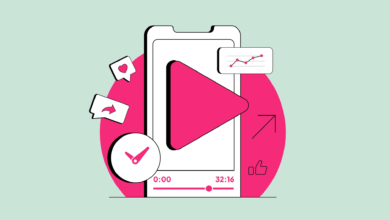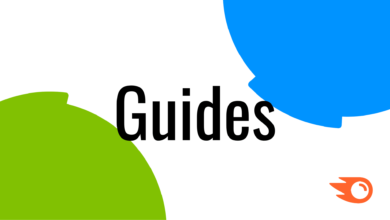How to Use ChatGPT for Marketing (with Prompts)

These tasks can be time-consuming and tedious for humans, but ChatGPT can help streamline the process and provide quick results.
Additionally, ChatGPT can be a valuable tool for brainstorming ideas, generating outlines for content pieces, and even providing inspiration for creative projects. It can help kickstart your creativity and provide a fresh perspective on your content marketing efforts.
Ultimately, ChatGPT can be a valuable asset for content marketers when used strategically and in conjunction with human expertise. By leveraging the strengths of AI technology and combining it with the creativity and insight of human marketers, businesses can create high-quality, engaging content that resonates with their target audience.
So, if you’re a marketer looking to streamline your content creation process and boost your productivity, consider incorporating ChatGPT into your workflow. Just remember to use it thoughtfully, understand its limitations, and combine it with your own expertise to achieve the best results.
However, ChatGPT can still be a valuable tool for generating ideas and outlines for blog posts. By providing it with a topic or a general idea, ChatGPT can help you brainstorm different angles, subtopics, and points to include in your blog post. This can serve as a starting point for your writing process and help you organize your thoughts before diving into the actual content creation.
Generating blog post ideas — example prompt:
- “I need ideas for a blog post about [topic]. The post should be informative and engaging, targeting [specific audience]. Provide at least 5 potential subtopics to cover in the post.”
Once you have the outline and main points for your blog post, you can then use ChatGPT to help you flesh out the content. By providing it with the key points you want to cover, ChatGPT can generate paragraph-length responses that expand on each point, providing you with a rough draft of the blog post.
Expanding on key points — example prompt:
- “I have outlined the main points for a blog post about [topic]. Can you help me expand on each point with relevant information and examples?”
While ChatGPT can be a useful tool for generating ideas and outlines for blog posts, it is important to remember that it is not a substitute for human creativity and expertise. It is always recommended to review and edit the content generated by ChatGPT to ensure accuracy, relevance, and quality before publishing it.
In conclusion, organizing keywords into a table based on semantic relevance and search intent can help businesses optimize their content for better visibility and engagement. By leveraging the capabilities of ChatGPT for tasks such as data extraction, translation, brainstorming, low-stakes writing, outlining, drafting, and filling gaps in existing content, businesses can streamline their content marketing process and improve the effectiveness of their content strategies. However, it is important to use ChatGPT judiciously and in conjunction with human expertise to ensure that the generated content meets the desired quality standards and aligns with the brand’s voice and messaging.
By following these best practices for ChatGPT prompts, you can ensure that you get the most out of the tool and generate high-quality content more efficiently.
In conclusion, while ChatGPT can be a valuable tool for overcoming writer’s block and speeding up the writing process, it is important to use it effectively and efficiently. By following a structured workflow and using best practices for prompts, you can maximize the benefits of ChatGPT and produce high-quality content for your blog or social media posts. Remember, ChatGPT is a tool to assist you in the writing process, but human input and editing are still necessary to refine and improve the final output.
When it comes to content creation and marketing strategies, many won’t make the cut, but some will be worth keeping after some revision. By applying proven tactics, providing constraints or qualifiers, being selective about constraints, adjusting with follow-up prompts, and applying filters in follow-up prompts, you can ensure that ChatGPT produces the results you desire in a faster and more efficient manner.
If you’re an experienced content creator or copywriter, you likely already know what works and what doesn’t. By specifying the tactics you want ChatGPT to use, you can guide the AI in the right direction. Additionally, providing constraints or qualifiers, such as text length or format requirements, can help point ChatGPT in the right direction. While these constraints may not always work reliably, they can help steer the AI towards the desired outcome.
It’s important to be selective about the constraints you provide, as too many requirements can cause ChatGPT to ignore some of them, especially on GPT-3.5. In such cases, it may be necessary to go step-by-step and adjust with follow-up prompts. ChatGPT rarely gets it right on the first try, so you may need to fix any mistakes with a follow-up prompt to get closer to a final product. Alternatively, you can revise your initial prompt and resubmit it for better results.
In addition to follow-up prompts, applying “filters” can help refine the content generated by ChatGPT. You can ask the AI to revise the writing to be more formal, casual, friendly, persuasive, emotional, authoritative, etc., depending on your specific needs.
When executing a marketing strategy to drive growth, it’s important to remember that while ChatGPT and AI tools can help streamline certain tasks, they cannot replace the expertise of a marketing team. Just as moving from spreadsheets to a CRM can enhance efficiency but not fully replace human input, AI tools should be viewed as supportive rather than all-encompassing.
Successful companies understand that effective content marketing goes beyond simply broadcasting messages to customers. With the right processes and platforms in place, content can become a powerful tool for fueling growth. By leveraging AI tools like ChatGPT in conjunction with human expertise, companies can enhance their content marketing efforts and drive sustainable growth.
—
### FAQs:
1. **Can ChatGPT completely replace the need for a marketing team?**
ChatGPT and AI tools can assist with certain tasks, but they cannot replace the expertise and creativity of a human marketing team.
2. **How can constraints and qualifiers be used to guide ChatGPT’s output?**
By specifying text length, format, and other requirements, you can direct ChatGPT towards the desired outcome.
3. **Why is it important to be selective about constraints when using ChatGPT?**
Providing too many requirements can cause ChatGPT to ignore some of them, leading to suboptimal results.
4. **How can follow-up prompts help refine ChatGPT’s output?**
ChatGPT often requires multiple iterations to get the content right, and follow-up prompts can help correct any mistakes.
5. **What is the significance of applying filters in follow-up prompts?**
Filters can be used to tailor the writing style of ChatGPT’s output to be more aligned with specific goals, such as being formal, casual, friendly, persuasive, emotional, or authoritative.




